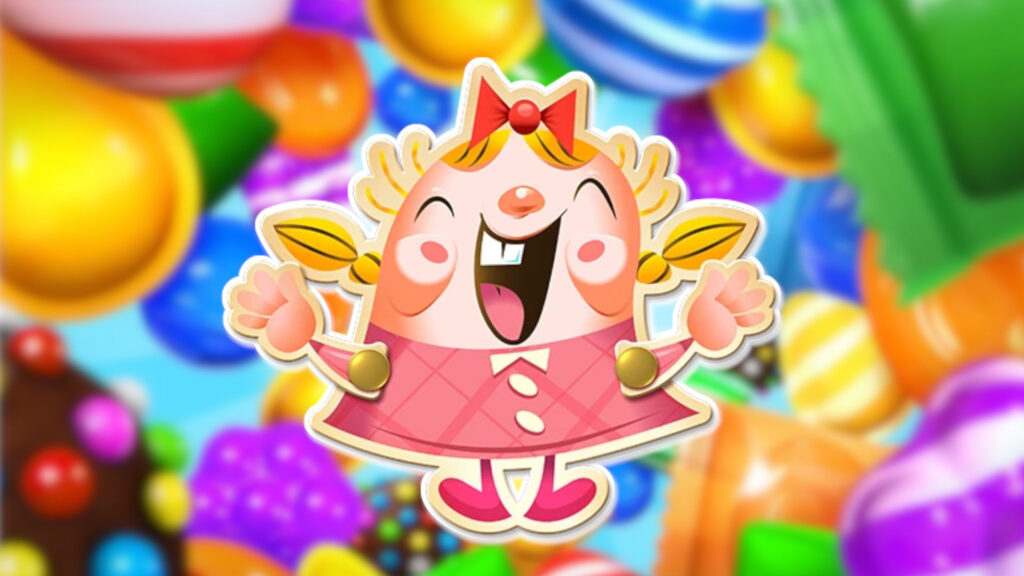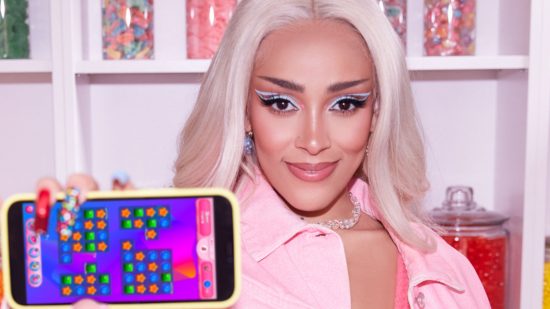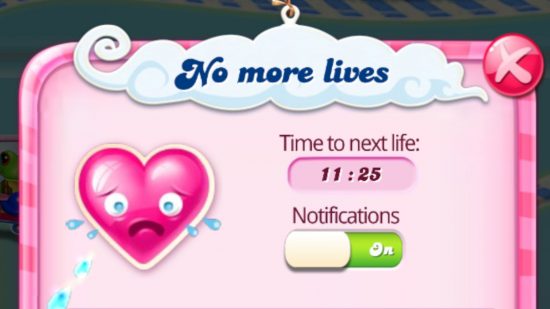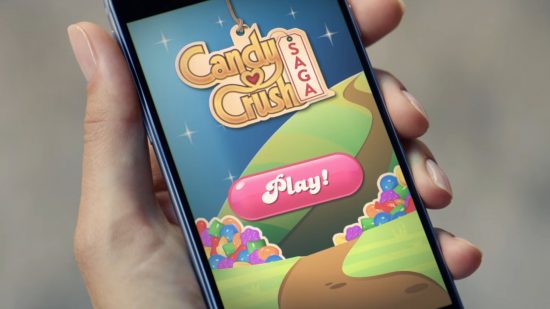
When it comes to the gods of mobile gaming, Candy Crush is the Zeus to the industry’s Mount Olympus. This year, King celebrated the fact that its primo puzzler had smashed past £20 billion in lifetime revenue, and honestly, it’s not really a surprise. With thousands of levels in the original game, three spin-offs to pick up and play, and a seemingly neverending amount of deals to get you more lives and candy-crushing, King has mastered the art of marketing a mobile game series.
Of all the success stories to come out of the last decade or so of mobile gaming, few are as flabbergasting as that of the rise of Candy Crush. Sure, Angry Birds has a couple of films, themed amusement park areas across the world, and a ringing endorsement from the ex-prime minister of the UK, David Cameron, but Candy Crush has managed to become just as much of a mobile game household name without all of that. Unlike fads such as Temple Run and Doodle Jump, you can’t argue with this game’s staying power. So, we’re looking back on how Candy Crush became a pop culture monolith.
Like Line Rider and Miniclip’s 8 Ball Pool, Candy Crush started life as a Facebook browser game. The original interpretation was quite different, though. For a start, this was Candy Crush sans Saga. Instead of episodic collections of levels, this version utilized a timed score attack mechanic in the same vein as one of the games that inspired the development team at King, Bejewled. Then, King reinvented its approach to level design by, well, incorporating levels, starting with Bubble Witch Saga on Facebook. The success of this fresh approach to puzzle gaming influenced the April 2012 release of Candy Crush Saga, before it arrived on iOS and Android mobile platforms later that year. Needless to say, it was a hit.
While it’s not quite as popular today as it once was, especially with younger generations, the popularity of Facebook gave Candy Crush Saga its first real boost. Smartphone games existed at the time, but the industry was nowhere near the scale it is today in 2012, and instead, lots of casual gamers – Candy Crush’s core demographic – played things like Farmville and Words with Friends in the browser. That was until they played Candy Crush.
Facebook was, and to some extent still is, a hub of casual games. And, in a stroke of genius, King introduced a mechanic where you could earn more in-game lives just by sending out game invites to Facebook friends, forcing this match-three on unsuspecting social media users. Before you knew it, everyone from your old school friends to your gran – more on that later – were puzzling the hours away.
In a discussion with writers from the App Store, King co-founder Sebastian Knutsson shared with the interviewer that the team hadn’t anticipated the runaway success of Candy Crush Saga. In Knutsson’s own words, “Our mindset was that this game is going to be gone in six to nine months, so we needed to have the next game ready. Over time, we realized that’s not the pattern at all. We misjudged the longevity of a game like this.” This makes sense considering King’s attitude to development pre-Candy Crush, with the developers churning out similar match-three games in their droves. Still, all these years later, with Candy Crush still raking in massive revenues, it’s shocking to see how naive King was to its biggest hit.
While King might not have anticipated the success of Candy Crush, they certainly learned how to build on it quickly. In 2014 Candy Crush Soda Saga arrived, closely followed by 2016’s Candy Crush Jelly Saga, and Candy Crush Friends Saga in 2018. Within just a few years of the original Facebook release of Candy Crush in 2012, King had built a dynasty with plenty of games for fans of the series to engage with. From the release of these games until now, almost all of them have been staples of the App Store and Google Play Store charts, bringing in new players regularly.

For a while, you couldn’t avoid the Candy Crush hype, with big-time U.S. TV hosts such as Stephen Colbert, Jimmy Fallon, and Ellen DeGeneres all featuring the game on their shows at one point or another. Then, there’s the long list of celebrities to appear in or endorse the game, including the Jonas Brothers, Khloe Kardashian, Doja Cat, Meghan Trainer, and many more. Simply put, if you’ve managed to avoid Candy Crush in the last ten years, whether seeing someone playing it on the bus or watching Fallon teach Criminal Minds star Mandy Patinkin how to play, you’re either living on the moon or wildly oblivious to pop culture.
Still, to stay afloat in the mobile gaming industry, you can’t just offer new games or updates. You have to implement a way of making some serious money. This is where King’s success story starts to become divisive. After all, Candy Crush is one of the first and most successful examples of a freemium game model, something that seems free-to-play, but often requires you to purchase microtransactions to enjoy fully or without limitations. While the developers proclaim to this day that fun comes first, even following the Activision Blizzard acquisition of King, some would argue with this suggestion.
For those who don’t know, you can only ever have a maximum of five lives in Candy Crush, with lives replenishing individually every 30 minutes. That means, if you power through all of them in a ten-minute play session, it’s a two-and-a-half-hour wait before you’re back up to five out of five. Or, you can buy some more lives to keep playing. You can see where we’re going here, can’t you?

The internet is rife with stories of kids, often those too young to know better, spending massive amounts of their parents’ money on in-game transactions in Candy Crush. There’s a similar amount of think pieces out there suggesting that Candy Crush addiction is a real affliction, to the extent that the U.K. Office of Fair Trading launched an investigation into the game back in 2013. I’m one of those types of writers who generally try to avoid using the word ‘addictive’, as more often than not, ‘engaging’ or ‘engrossing’ is a better fit, but if there is a game potentially worthy of the a-word, then Candy Crush might be just that.
I have my own story of the levels people can stoop to keep on playing Candy Crush. Back in the early days of King’s puzzler, when you couldn’t avoid requests from Facebook friends to play so that they earned their extra in-game lives, I received a request to play from my gran. What’s so peculiar about this, I hear you ask. Well, gran had died six months earlier.
I later found out that a relative – I’m not naming names – had co-opted my gran’s social media and made a Candy Crush account as a burner for when their own account had run out of lives and social media invites. As disappointing as this was – though not entirely, I’d hope a message from the beyond would be something more poignant – it does bolster the argument that the need to keep on crushing candy can bring out the worst in people.

You might be wondering why I’m making such a big deal of the microtransactions, freemium model, and social media intrusions of Candy Crush, after all, this isn’t a feature intended to lament King’s business practices. However, you could argue that these stories of engrossed gamers, gratuitous spending, and my own sweet gran, are pivotal to how many of us first became aware of the game. Even if you’ve not played it, you’ve certainly heard of it, much in the same way those who don’t know much about soccer can still point out a Manchester United shirt, or those without an interest in TV can recognize Homer Simpson.
So, how did Candy Crush become part of the cultural zeitgeist? It’s complicated, but as we’ve discussed here, it’s down to a few factors. In a sense, it’s a right-place-right-time scenario, with King’s puzzler arriving just at the start of the era of smartphone gaming alongside a smart, or sneaky, depending on your interpretation, freemium model that many other developers would later co-opt. It’s also down to ringing celebrity endorsements, both organic and those King presumably shelled out for.
However, we can’t ignore the controversies of Candy Crush either. After all, this article isn’t necessarily about the success of the match-three puzzler, but how it became so well known. Either way, with the might of Activision Blizzard now behind Candy Crush, it’s unlikely we’ll see the end of cascading candy falling into line any time soon. Whether you love it, hate it, or don’t even have an opinion on it, when generations look back on the cultural artifacts of the 2010s, it’s going to be right up there with Justin Beiber and Marvel movies.
If you’re looking for something new to play for a break from Candy Crush, be sure to check out our list of the best mobile games and our mobile games of the year Awards for 2023. Or, if you’re more of a Nintendo Switch gamer, see our Switch games of the year Awards. Either way, you’re in for a treat.